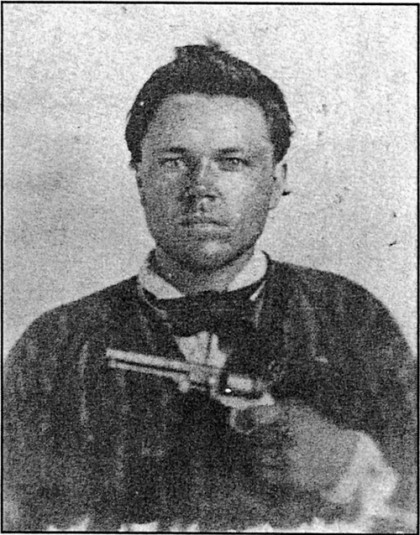It’s not often that you come across a Civil War-era photo of your 3rd great grand uncle. Of course, if your reaction to seeing the photo is to shout “Finger!” at it, then you also know you’re a gun nut.

The right of the citizens to bear arms in defense of themselves and the State …
It’s not often that you come across a Civil War-era photo of your 3rd great grand uncle. Of course, if your reaction to seeing the photo is to shout “Finger!” at it, then you also know you’re a gun nut.

Comments are closed.
Heh.
Though, you know, hammer down on a muzzle-loading single-action revolver, thus presumably down on a cylinder without even a cap.
So no monkey-fingering in the world on that trigger is going to make it go boom.
So there’s that.
Yes, that is obviously single action and might even be cap and ball, depending. As is, not going to fire.
I’m 99.9% certain that it is cap and ball. That looks like an integral ramrod assembly under the barrel.
Not that Bitter is wrong, at all. Even knowing that it’s an uncocked cap and ball gun the finger on the trigger makes me uncomfortable.
Besides, Cooper wasn’t even born yet. I think.
Can’t tell if the finger is on the trigger or behind it.
I have a higher resolution version, and there are no pixels in front of his finger that appear to be a trigger.
Single action gets a pass.
It’s a cap and ball revolver, the loading lever under the barrel is very evident.
Possibly a cartridge conversion but they usually would remove the loader and add a ejector rod to kick out the empties.
I’m going to guess an 1851 navy, mostly due to it looking smallish, or he was a really big guy!
SAA and Cap and ball revolvers just feel so natural carried like that, if you haven’t you ought to try one!
Especially the cap and ball!
Yes; it’s a Colt ’51 Navy (or a copy of one, as copies were made back in the day). I have one. There’s not the room to get even a small finger behind the trigger.
There were a few double action revolvers at that time (they have more room behind the trigger because they need it for the longer DA pull) but this isn’t one of them.
The photo is grainy and low res., but I think I just can make out the capping cutouts in the back of the cylinder, meaning it would not be a conversion, rather it would be the original percussion form of the gun (which was the most common during the war).
It seems that these sorts of pictures from the Civil War always included the subject with his finger on the trigger. Apparently to indicate that he was in fact a dangerous character ready in an instant to bring death and destruction to those rebels.
But still, it is the booger-hook on the bang switch, and hopefully that would be trained out before combat.
“he was in fact a dangerous character ready in an instant to bring death and destruction to those rebels”
He was a Confederate soldier. :)
The rules of gun safety have come a long way since the mid nineteenth century. I have read advice on gun handling from that era that includes the caution not to drag a loaded musket through a fence by grabbing it by the muzzle and pulling it toward yourself. Cooper’s four rules are a large evolutionary leap beyond that.